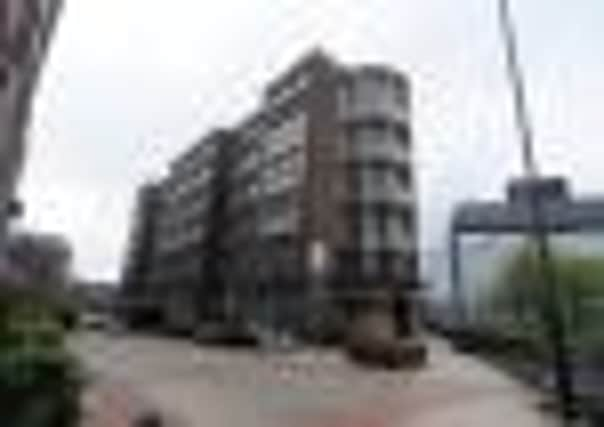Once arresting site set for a new lease of life following acquisition


From inside its imposing towers, crimebusters like the legendary CID chief Denis Hoban plotted the downfall of the city’s criminals.
All 999 calls in the Leeds area were answered in the building, and controllers based in Brotherton House aimed to make sure there were plenty of bobbies on the beat.
Advertisement
Hide AdAdvertisement
Hide AdNow the building is set for a new lease of life after being acquired by a local property firm.
The landmark building, with its twin circular staircase towers, has been acquired by property company and developer J Pullan & Sons, for an undisclosed sum, from West Yorkshire Police, in a deal brokered by the Leeds office of Jones Lang LaSalle.
Based at the junction of Westgate with St Paul’s Street, Brotherton House has 56,000 sq ft of office space and, until recently, had been used by West Yorkshire Police as an administration base.
Mark Pullan, the managing director of Pullan’s, said yesterday: “We own a number of properties in West Yorkshire, including several in the west end of Leeds city centre, and the acquisition of this landmark building complements our existing holdings.
Advertisement
Hide AdAdvertisement
Hide Ad“Our longer term aspirations are to refurbish the premises to a very high standard, with a view to bringing the building back to its former glory.”
Mr Pullan said Brotherton House had strong architectural features, and its boilers, which dated from the 1950s were still working.
It is anticipated that Pullan’s will reveal its plans for Brotherton House in the new year.
Mr Pullan said he hoped to install more “green” energy systems in the building, which might include rainwater harvesting.
Advertisement
Hide AdAdvertisement
Hide AdJeff Pearey, the head of Jones Lang LaSalle’s Leeds office, said yesterday: “The sale of Brotherton House attracted a great deal of interest from property companies and developers. In total, we received 12 bids from interested parties.
“Pullan’s has a long term interest and vision for this unique and interesting property and it will be exciting to see their plans come to fruition.”
Mr Pearey said it was “a great achievement” to secure the future of the historic, gateway building.
Officially opened by the Earl of Scarborough in 1957, Brotherton House was built the year before for £350,000 as the headquarters for Leeds chemicals and dyestuffs firm Brotherton and Co.
Advertisement
Hide AdAdvertisement
Hide AdIt was at the heart of a new business area at the Westgate end of The Headrow.
Old business premises were demolished to make way for it. It was named after the Brotherton family, who also gave their names to the Brotherton Library and Collection at Leeds University,
It was built by George Wimpey and Co, to a design by Leeds and London architect Victor Bain, on a site leased from the city council.
It was described as a building of the future, with the “latest external and internal structural techniques, automatic ventilation and ceiling heating”.
Advertisement
Hide AdAdvertisement
Hide AdThe building’s contemporary elevation was faced with brick, Portland stone, Cumberland slate and Italian quartzite.
Perhaps in keeping with its future use as a police station, the building had armoured glass entrance doors.
When Brotherton House became surplus to its owner’s requirements in 1962, it was put up for sale and was bought by Leeds Corporation the following year for around £325,000.
It was in 1965 – long before the merging of local police forces and the establishment of the current West Yorkshire force, that the old Leeds City Police took over part of the building. The force later established its administrative headquarters there.
Advertisement
Hide AdAdvertisement
Hide AdMany police departments have been based at Brotherton House over the decades, including senior CID, Special Branch, Fraud Squad, Regional Crime Squad, Firearms Registry, Aliens Department, Force Prosecutions and the Policewomen’s Department.
At the heart of Brotherton House was the “information room”.
This acted as the control room for Leeds City Police and received all 999 calls and enquiries by telephone.
The control room had radio contact with every officer on duty who was out on patrol on the streets.
J Pullan & Sons, was formed in 1885 by Joseph Pullan.
Advertisement
Hide AdAdvertisement
Hide AdToday, the company is still managed by the Pullan family, but the business has expanded from its roots as a construction company into an organisation which manages a portfolio of properties.
It also carries out developments across West Yorkshire and beyond.